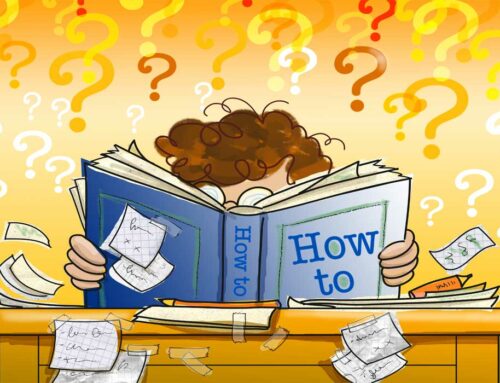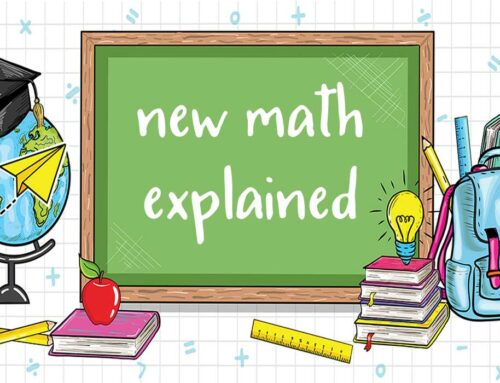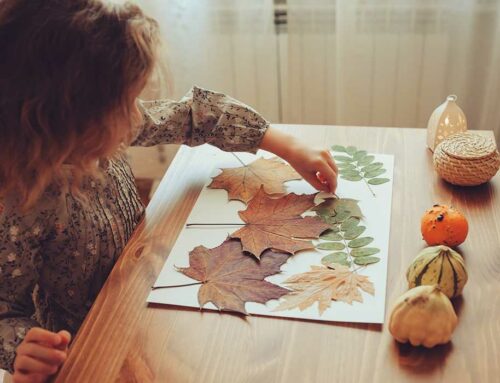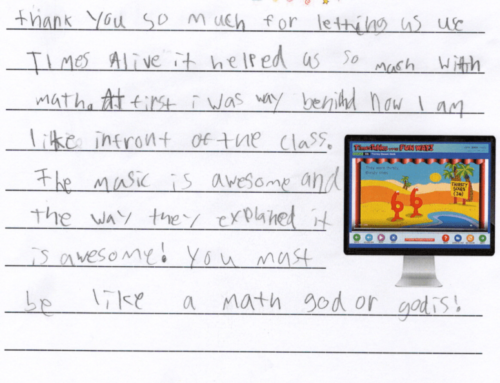Learning times tables is hard. More often than not, students learn their times tables facts and forget them soon after. The problem is that kids who are presented with times tables are trying to learn things for which they have no reference.
The Times Tables the Fun Way picture-story method is designed to aid memorization and retention of fundamental math facts. Using a picture and story to illustrate the numbers, students have a visual clue to recall the math fact. This makes learning times tables easy and fun!
In Times Tables the Fun Way, we turn numbers into characters and tell stories so kids can have a visual image to easily retrieve the answers to the math facts. For example, for teaching ones we say, “One is like a mirror. When six is with one, he looks back and sees himself so the answer is six.”
In order for students to experience quick success, easier stories are taught first. Kids get an ah-ha moment and think, “I can do this. I get it.” They’re eager to learn more stories in the program. (For more on the best sequence for teaching multiplication facts, read, “What’s the Best Order to Teach Times Tables?“)
Making Times Tables Memorable
Though the picture-story method for learning math facts is fast and effective for learning times tables, not every student learns in the same way and at the same pace. Kids with learning differences, such as dyslexia and dyscalculia, for example, may need to have math lessons reinforced for math facts to stick in their memory.
Here are 10 fun and effective ways to reinforce math facts using Times Tables the Fun Way:
1. Stimulate interest in the story by discussing the storyline before it is read. Ask students questions that are pertinent to the story. When the story is finally introduced, students will be more likely to remember the story because it will fit into something that they have discussed and experienced.
2. Tell the story to the students while they look at the picture in the text. Or, if working one-on-one, read the story together and then spend some time talking about the picture. This reinforces the story-number connection. Be as imaginative and creative as you can while telling the story. There is always room to add more details. Kids love stories and will often be very attentive during this part of the learning process.
3. Ask a student to read the story out loud in the text. The rest of the class can read along.
4. Ask another student to read the caption located underneath the picture.
5. Write the fact on the board or a piece of paper and remind the students to look at the numbers of the fact and remember the story. Point out the similarities. For example: “Don‛t these two 8s look like snowmen? And remember how cold they are and that the sticks are for the fire. ‘Sticks are for’ sounds like 64.”
6. Ask the students to tell the story in their own words. This is best done during the following lesson.
7. Use additional learning activities, such as having students make their own flashcards or book with the story illustrations and the facts.
8. Play games with the Times Tables the Fun Way Clue Cards. Students can compete against themselves by trying to better their previous times with a small group of clue cards (about 10). Or, you can divide kids into groups and have relay races with the clue card sets.
9. If working one-on-one, read one story per day. Bedtime is preferable because kids will have the night’s sleep to allow the story to gel in long-term memory. The following morning ask your student to tell you the story or the fact. For instance, “Do you remember that story for 6 x 6? What was it?” Your learner can then tell the story in their own words.
10. Retention is improved when students are able to thoroughly learn each story and fact before moving on to more stories. Therefore, proceed at a comfortable pace for the learner and be sure to offer plenty of praise.
Mastering Times Tables
Mastery of the times tables is the largest mathematical hurdle students will encounter. It is so important that all basic math skills of the elementary and junior high grades depend on it.
Self-esteem and personal assessment of ability is often tied to mastery of the times tables. Students compare themselves to their peers and measure their own intelligence by their performances. Give your students a head start and the confidence they’ll need to excel in math by teaching them Times Tables The Fun Way.
The Times Tables the Fun Way system is designed as an introduction to times tables for 2nd or 3rd graders, but it can also be used in special education programs and in the higher grades for review or learning of the more difficult or forgotten facts. Times Tables the Fun Way™ is available in print and digital formats to suit every kind of learner and teaching environment. Check out our new Teacher’s Kits with everything you need to make teaching times tables fun and easy. School licenses are available too.
Prefer to learn online? Try a free trial of Online Times Alive for Macs and PCs (or Times Alive app for iPhones and iPads) today. Find out why kids continue to achieve success with our award-winning math lessons.







Leave A Comment